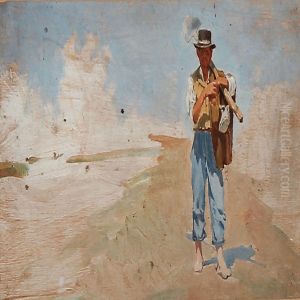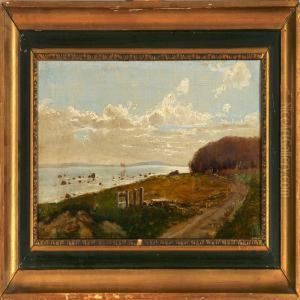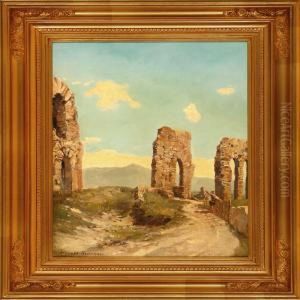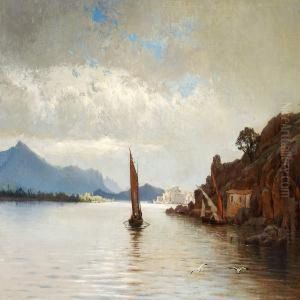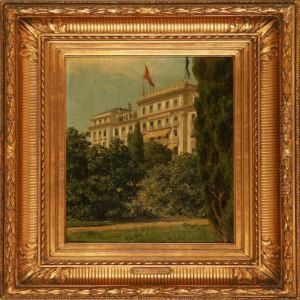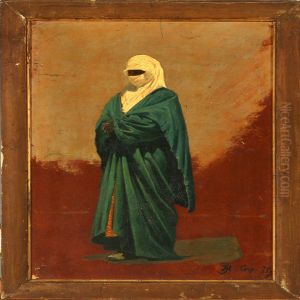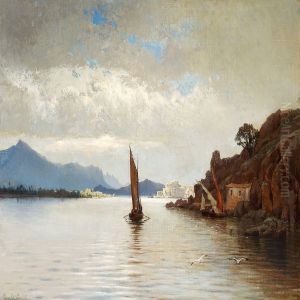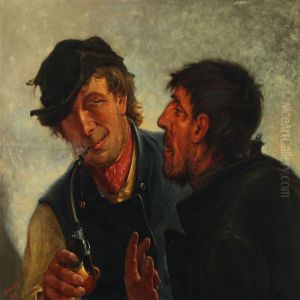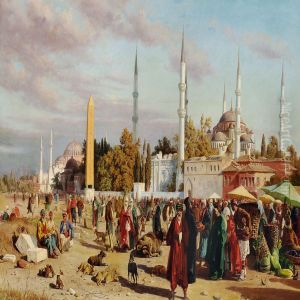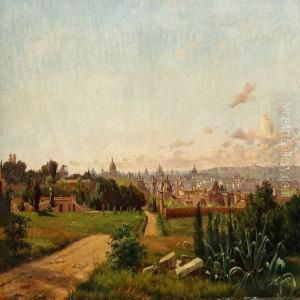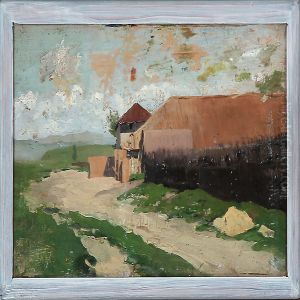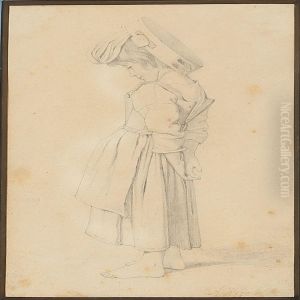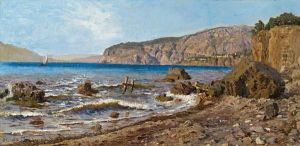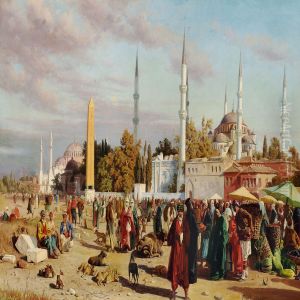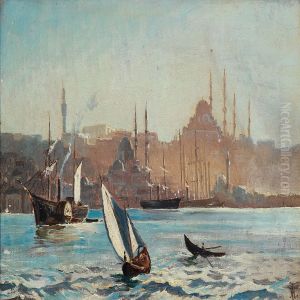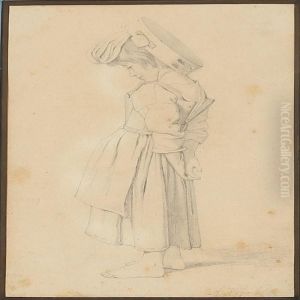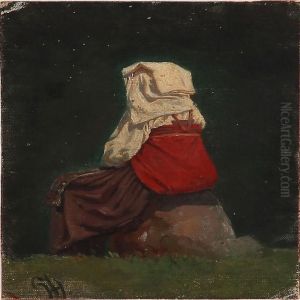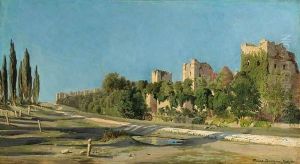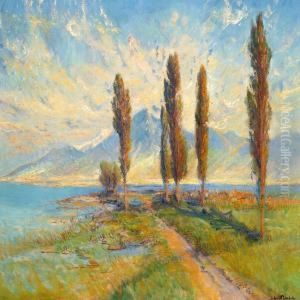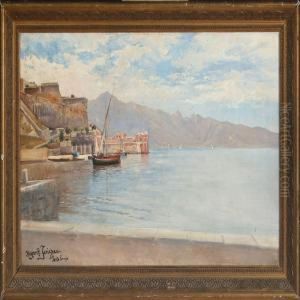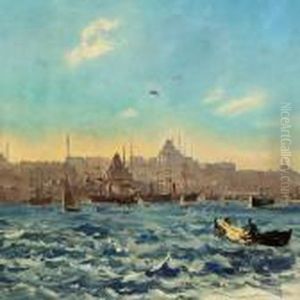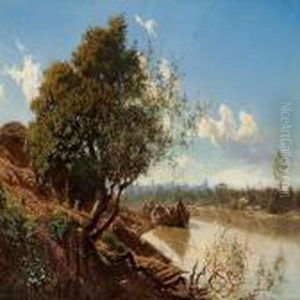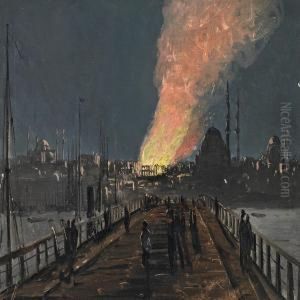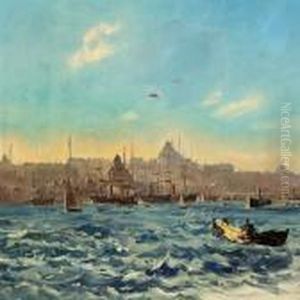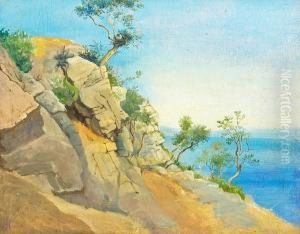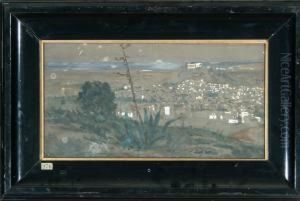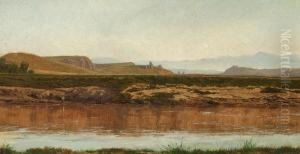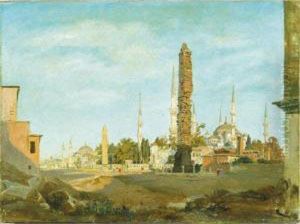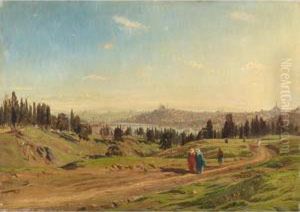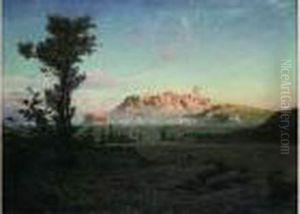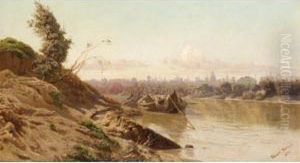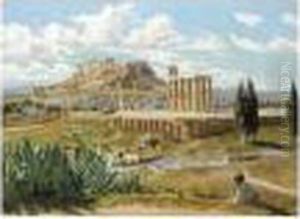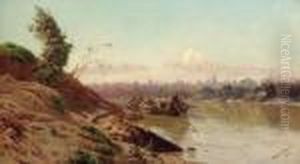Harald Jerichau Paintings
Harald Jerichau was a Danish painter born on July 14, 1851, in Assens, Denmark. He was part of the Jerichau artistic family, being the son of the well-known sculptor Jens Adolf Jerichau and the painter Elisabeth Jerichau-Baumann. With such a rich artistic heritage, Harald was exposed to the world of art from a young age. He began his formal artistic education at the Royal Danish Academy of Fine Arts in Copenhagen.
During his time at the Academy, Jerichau was influenced by the prevailing artistic trends of the time, taking cues from the Danish Golden Age tradition as well as the emerging Realist movement. Although his career was short-lived, his works received recognition for their detail, composition, and color.
Jerichau traveled to Italy, which was a common practice among Danish artists of the period, to study the masters and draw inspiration from the vibrant Mediterranean light and scenery. His travels played a significant role in his artistic development, infusing his palette with the brighter tones that were less common in the more somber Danish climate.
Tragically, Harald Jerichau's promising career was cut short by illness. He died on November 25, 1878, in Rome, Italy, at the age of 27. Despite his brief career, his paintings remain a testament to his potential and skill, reflecting the teachings of his parents and his own unique interpretation of the world around him. Jerichau's works can be seen as a bridge between the romanticism of the Danish Golden Age and the naturalism that would come to characterize Danish art in the late 19th century.
